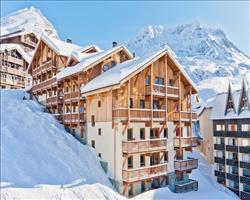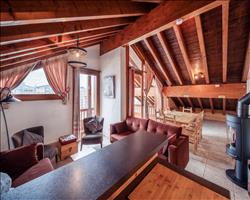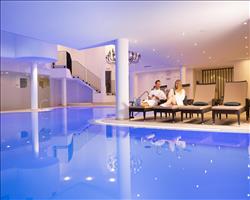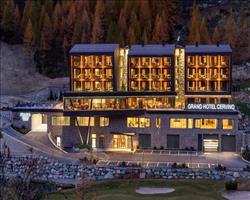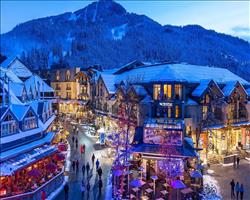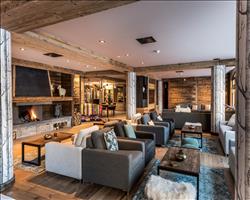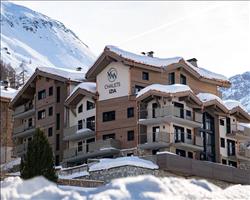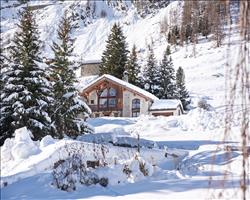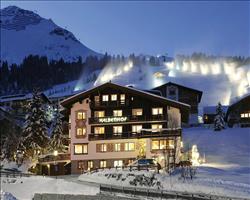The only thing that trumps a ski holiday is a ski holiday with amazing snow. And with sky-high peaks, socking great glaciers and annual snowfall that would bury whole houses, these resorts are no strangers to the white stuff.
Stay in one of the resorts below, and you’ll be skiing the best conditions on the planet – with huge linked ski areas, big après ski and gobsmacking views adding the final touches of an incredible week on the slopes.
Top 10 Snow Sure Ski Resorts
When you’re skiing in Europe’s highest ski area, snow sureness is pretty much a given. A host of glaciers keep this neck of the woods cool and white, including the fabulous Theodul between the Breithorn and Klein Matterhorn mountains on the Swiss-Italian border. Rarely a year goes by when there hasn’t been snowfall here every day, to the extent that the glacier runs are open for skiing in the summertime. Up here you’ll also find Europe’s highest aerial cableway and the highest viewing platform in the Alps at a whopping 3883m – the close-up views of the Matterhorn are spectacular and you can also spot Gran Paradiso, Mt Blanc and Jungfrau. As if Mother Nature didn’t bless the area with enough, the man-made snow is some of the best on the planet. The world’s first ‘Snowmaker’ kicks in at the start of autumn, fuelling piste bashers which lay a base of the white stuff where needed. It also pumps out extra cover throughout the season (often no more than 20 days a year as the natural conditions are so good).
The tourist office here have issued a ‘Snow Guarantee’ in recent years, which challenges you to find any other resort in Europe that can match VT’s quality and quantity of snow. You can’t mock their confidence: For starters, this is the highest ski resort in Europe at a giddying 2300m. Then there’s the fact that 99% of the area is above 2000m… including skiable glaciers - Péclet and Thorens – as well as the summit of the 3 Valleys, Pointe du Bouchet at 3230m. The top bits get something like six metres of snowfall each season (that’s enough to bury a 2-storey house), and on the rare occasion that any of the slopes are lacking, 350 cannons are able to cover 40% of the pistes. On the whole, it’s pretty hard to beat, especially when you consider that the resort is ski in, ski out, and sits at the top of the biggest ski area in the world…
If a place lays claim to the biggest summer skiing destination in Europe, it’s going to be a safe bet for cracking conditions in the winter. All hail the socking great Mont De Lans glacier, where some of the most varied snow-sure terrain we’ve ever skied peaks at 3568m. High in the Oisans massif, the glacier creates a smooth plateau on the top of the ski area, which is why they call this an ‘upside down’ ski resort: unlike your usual mountain, the gentlest stuff’s up top, with the steeper terrain further down. This is smashing for beginners, who can reap all the benefits of high altitude skiing – snow, views et al. Park rats will go wild for Freestyle Land at a sky high 2600m - a massive slopestyle setup that moves onto the glacier in the summer. A prevailing amount of north-facing terrain (we love the Mont des Lans and La Fee areas) keeps the rest of the area cool into springtime, and where needed, 224 cannons create 60 hectares of manmade cover.
ONE ski resort, with TWO skiable glaciers and THREE peaks towering over 3000m: The Tiefenbach and Rettenbach glaciers hold hands at the top of the ski area (reachable by car or bus along the Ötztal Glacier road), and its these we have to thank for Solden’s super long season. Sometimes their lifts open as early as September, but things really kick off when the World Cup takes place on the Rettenbach’s steeps in October. This considered, there’s usually a mighty amount of cover come Christmas, with slopes often being skiable into May. Beginners and intermediates will love the glaciers’ glorious network of blues and reds, and there are some wonderful steeps and powder runs for experts to soar down. At 3340m, Schwarz Schneide is the highest point of the big three peaks, with awesome views of the Dolomites on a clear day. Manmade snow can cover 67% of the area, but this place would probably be fine without it – the average depth reaches 3 metres or so most years.
Saas Fee’s positioning is spectacular, in both snowy and scenic senses of the word. The Dom Mountain is Switzerland’s second highest summit at a dizzying 4545m – and it’s one of THIRTEEN 4000m+ peaks that encircle the resort, keeping the temperatures low and the views stupidly pretty. Another of these peaks is the Allalin, and it’s this and the Dom Mountain that the Fee glacier sprawls between. Here you’ll find some of the best conditions in the Alps from the top lift station at 3500m (we’re talking white stuff that holds out into the summertime, when 20km of slopes remain skiable). The rest of the area is pretty much all above 2000m too, only ever dipping to 1800m on the homeward runs. All things considered, the lift office have good reason to claim that around 70% of the area has ‘guaranteed’ snow from November to May.
At 3883m, the Plateau Rosa glacier (called the Theodul in neighbouring Zermatt) has the highest pistes in Europe – up here, snow depths of 3 metres have been recorded in recent years, and a large chunk of the mountain’s able to stay open for skiing in the summer months. The town itself has its own claim as the highest ski resort in Italy at a heady 2050m – and the pistes that trail between Piccolo Cervino and the town (mostly reds and blues) tend to stay smothered in white all season long. An enormous 200km of the area shared with Swiss neighbour Zermatt can be covered with artificial snow if need be, though the equipment’s more likely to be gathering dust if the Snow Gods continue with their regular dumpings.
Altitudes peak at 3456m up on the magnificent Grande Motte Glacier, where the slopes are skiable in the summertime thanks to cool temperatures and generous dumpings from the north and south-east. With the town at a lofty 2100m and most of the ski area above it, not to mention many slopes facing north (we love the Tovière area), the whole place does a stellar job at holding onto the good stuff. On top of natural snowfall, Tignes has over 350 snowguns that create man-made snow using the waters of the resort’s iconic lake. There’s also another skiable glacier over in Val d’Isere (accessible with the Espace Killy pass), so running out of high-altitude pistes to ski isn’t a worry.
The Coast Mountain range is covered in dense rainforest, and as you’d expect it gets a LOT of precipitation. Whistler’s snowiest month on record was November 2009, when over 5.5 metres of the stuff fell – more than other resorts can wish for in an entire year (on average, the yearly snowfall’s 11 metres…). While it hardly seems necessary, they’ve invested millions into snowmaking, which can cover around 700 acres of terrain on both mountains. If that wasn’t enough, the Blackcomb Mountain also has the backup of the Horstman glacier, where summer skiing is possible. Giving Whistler the longest ski season in North America, it all adds up to an incredible time on the snow.
At 1850m, Val itself manages to have the height of a purpose built resort, plus all the charm of an old school mountain town. The Pissaillas glacier has a little something to do with the snow quality, where blue and red slopes stream down from 3300m. It’s not the only skiable glacier in these parts, with Tignes’ Grande Motte on the other side of the Espace Killy, which is often still skiable in the summertime. All in all, the bulk of the slopes sit above 2500m: a whopping 9000 cannons adding to the cover at the beginning of winter, with a host of north facing slopes keeping the snow shaded later in the season (plus they look over Mont Blanc and the Grande Casse, so the springtime views are insane).
More often than not, Lech tops the tables for garnering the most white stuff in Europe. Owing to a fabulous microclimate, winters are cold and oh so snowy, with the first flakes appearing in September most years. And they properly pile up as the season goes on – to around 7 metres on the local slopes, and a whacking great 10m up in Zurs. Warth’s north-facers keep the snow chilled into springtime, with lifts still chugging into the second half of April. This makes the area the most reliable parts of the wonderful Arlberg region, not to mention one of the finest freeride spots on planet earth. It’s also the only place in Austria that allows heli-skiing, so there’s always more to be skied on higher, even snowier terrain.
All of these ski and snowboard destinations have at some stage held titles like "Best snow sure ski resorts" or "Best snow sure ski resorts in Europe", or been included in the winners lists of top North American ski resorts such as "Top Canadian Snow sure ski resorts"... All adding up to the most SNO sure ski resorts worldwide.
Best snow sure resorts
| Resort | Best features |
|---|---|
| Zermatt | Skiable year-round, glacier pistes, world class snowmaking |
| Val Thorens | Europe’s highest ski resort at 2300m, slopes from 3230m, average 6m snow/year |
| Les 2 Alpes | Big summer ski destination, beginner-friendly glacier skiing, top height - 3568m |
| Solden | 2 skiable glaciers, 3 peaks above 3000m, long ski season, excellent snowmaking |
| Saas Fee | Glacier skiing, top height of 3500m, almost all slopes above 2000m |
| Cervinia | Italy’s highest ski resort, Europe’s highest pistes @ 3883m, glacier skiing |
| Tignes | 2 glaciers, top height 3456m, high altitude bases |
| Whistler | Longest season in North America, glacier skiing, average 11m snow/year |
| Val d'Isere | High altitude resort, most slopes above 2500m, 2 skiable glaciers, 9000 snow cannons |
| Lech | Very snowy microclimate, deep cover – often 7-10 metres/year, north facing slopes |













